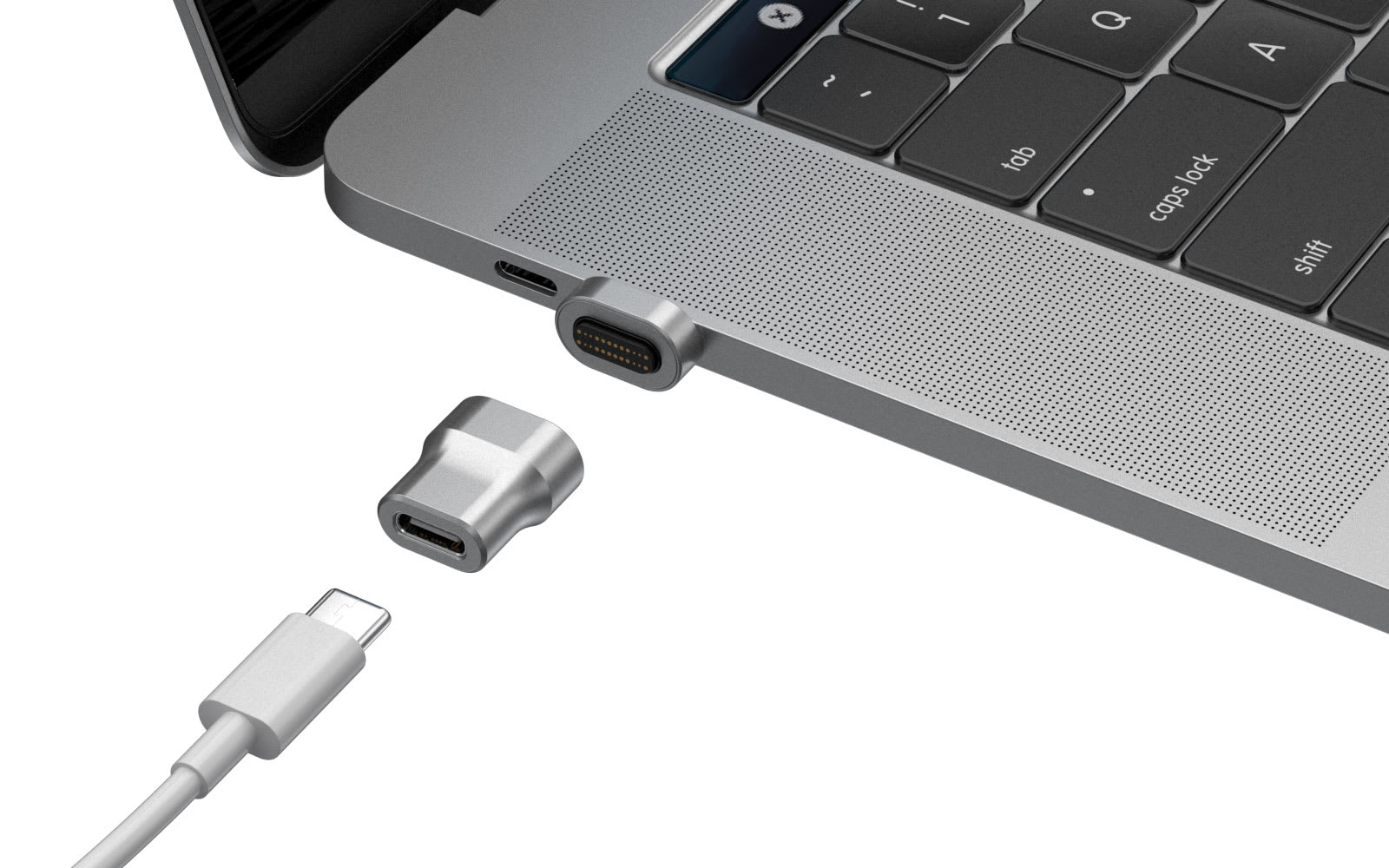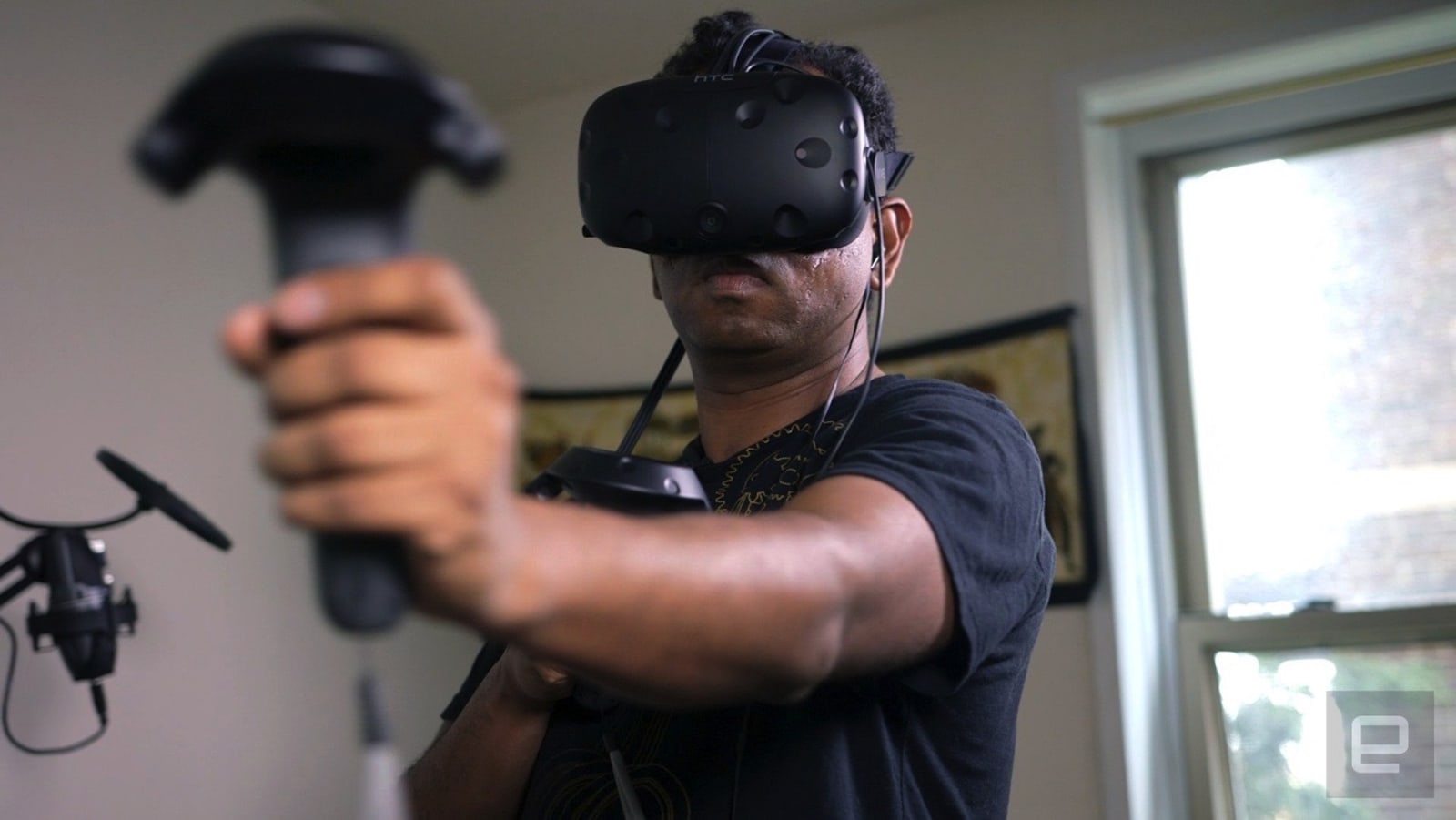Tag Archives: connector
MagSafe makes a full comeback for your USB-C MacBooks
 One feature that seasoned MacBook users may miss is the good ol' MagSafe connector, because no one wants to accidentally drag a pricey laptop off the table. Alas, ever since Apple made the jump to USB-C, it decided to retire its handy magnetic invent...
One feature that seasoned MacBook users may miss is the good ol' MagSafe connector, because no one wants to accidentally drag a pricey laptop off the table. Alas, ever since Apple made the jump to USB-C, it decided to retire its handy magnetic invent...
VR standard promises an end to headset connector headaches
 If you've used a wired VR headset, you probably know the connector situation is inconsistent and messy: you frequently have to plug multiple cables into your PC, which is space consuming at best and potentially impractical if you have a laptop. That...
If you've used a wired VR headset, you probably know the connector situation is inconsistent and messy: you frequently have to plug multiple cables into your PC, which is space consuming at best and potentially impractical if you have a laptop. That...
Apple to Introduce Yet Another Connector for Accessories, But it’s a Good Thing
Bi-Cord Cable w/ Lightning and 30-pin Connectors: Charge & Charge & Sync…& Sync?
Apple’s introduction of the Lightning connector means that people like me who have both a new and an old iOS device have more cables to keep track of and less USB ports to plug them into. If you’re looking for a simple and cheap solution, have a look at the Bi-Cord. But just look at it, don’t put down money for it just yet.

The Bi-Cord has a USB connector at one end. Then it splits into two cords, one with a 30-pin connector and one with a Lightning connector. Future versions could have connectors for other devices such as a micro-USB. Its inventor, Patrick Graham, claims that the Bi-Cord can be used to charge two devices at once. What I don’t know is if the cord can also sync two devices at once. The cords are each 6′ long and are made of braided nylon for added durability.
Pledge at least $15 (USD) on Kickstarter to get a Bi-Cord as a reward. On one hand, that’s a good deal, considering Apple sells its cables for $19 each. On the other hand, if I were you I’d wait until Patrick reveals more information about the Bi-Cord’s parts, particularly if Patrick uses Apple-certified connectors. Because if the connectors are not certified all we have here could be two broken cables in one.
USB alliance finalizes 10Gbps specification as USB 3.1
The USB 3.0 Promoter Group teased us with the prospect of a 10Gbps USB standard back in January, and it now has something to show for its work: the alliance has finalized its specification under the USB 3.1 name. While little has changed with the port format in half a year's time, its completion lets AMD, Intel and others start work on chipsets that offer twice the bandwidth of USB 3.0 while preserving support for USB 2.0. There's no public roadmap for the first USB 3.1 devices, although the first related developer sessions will begin on August 21st. Not that the Promoter Group is necessarily in a rush -- while Intel's Thunderbolt 2 will hit an even quicker 20Gbps this year, the new USB format is more likely to receive broad support.
Filed under: Peripherals, AMD, Intel
Via: The Register
Source: USB Implementers Forum (PDF)
Apple patent stuffs two ports into one, saves space in your laptop
Port space is very limited on laptops, but Apple has just received a patent that could solve that problem in the simplest way possible: cramming two ports into one. Expanding on what we've seen with some multi-format card readers, Apple has designed a layered port whose staggered electrical contacts and overall shape let it accept two different connectors. While the company uses the combination of a USB port and SD card reader as its example, the patent could theoretically apply to any two technologies that make sense together. The real question is whether or not Apple will use its invention at all. The Mac maker has a few slim portables that could use some expansion, but there's no evidence that the company will tweak its computer designs in the near future.
Filed under: Laptops, Peripherals, Apple
Source: USPTO
Neo-Plug Magnetic Mobile Device Charger & Data Cables: MagSafe All the Things!
If you own a MacBook, then you’re probably thankful for its handy MagSafe, the magnetized power connector for your laptop’s charger. Not only does it make connecting the charger to your laptop insanely easy, it also detaches fairly easily. When you trip over the cord or yank it off forcefully, it won’t take your precious MacBook down with it. The Neo-Plug works just like the MagSafe, except it’s for mobile devices.

Invented by Jacob Brozek, the Neo-Plug takes its name from the neodymium magnets that connect its two parts together. Jacob’s design essentially divides the connector end of a charger or data cable into two parts. One end stays on the cable while the other end stays on the port of your mobile device. The magnets embedded on both halves connect the two parts effortlessly.
Brozek is seeking to raise $167,000(USD) on Kickstarter by May 8 to finish his product, but with such a good product I think he’ll raise more than that amount. As of now the Neo-Plug has three variants – micro-USB, 30-pin and Lightning. Pledge at least $30 and you get a Neo-Plug of your choice. You can also learn more about the Neo-Plug on its website.
USB 3.0 enhancement to bring 10Gbps transfers, backward compatibility in mid-2013
Don't call it USB 4.0. Here in Las Vegas, the USB 3.0 Promoter Group announced the development of a SuperSpeed USB (that's USB 3.0, if you're curious) enhancement that will "add a much higher data rate, delivering up to twice the data through-put performance of existing SuperSpeed USB over enhanced, fully backward compatible USB connectors and cables." This supplement to the USB 3.0 specification is anticipated to be completed by the middle of this year, bringing along a new 10Gbps data rate, improved data encoding for more efficient data transfer, and of course, compatibility with existing 5Gbps hubs and devices (and even USB 2.0 products). We've yet to hear of any device makers trotting out new gear that'll handle the new spec, but hopefully we'll hear more at CES really gets rolling.
Continue reading USB 3.0 enhancement to bring 10Gbps transfers, backward compatibility in mid-2013
Filed under: Peripherals
Source: Marketwatch, USB-IF
Apple begins shipping its Lightning to 30-pin adapter at the speed of… freight
iPhone users with a flotilla of 30-pin devices, desperate to restore connectivity with their newest handset's natty connector, can rest easy. Cupertino has contacted several Australians who pre-ordered the 30-pin to Lightning adapter to tell them they can expect the first units to arrive tomorrow. The Stateside store is still promising a generic "October" launch, but it can't be too far away if the Antipodeans are getting theirs.
Filed under: Cellphones, Peripherals, Apple
Apple begins shipping its Lightning to 30-pin adapter at the speed of... freight originally appeared on Engadget on Mon, 08 Oct 2012 08:22:00 EDT. Please see our terms for use of feeds.
Permalink | MacRumors | Email this | Comments
MacRumors | Email this | Comments 



